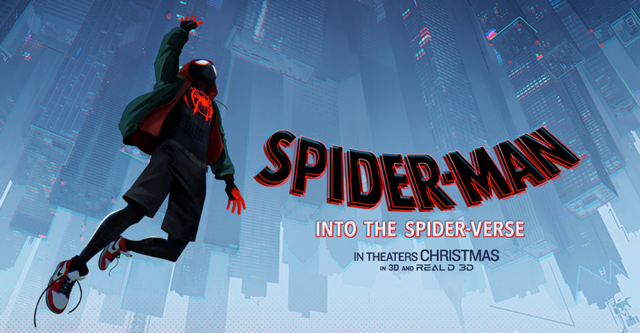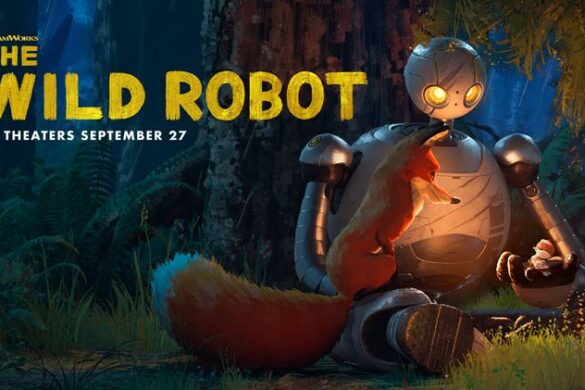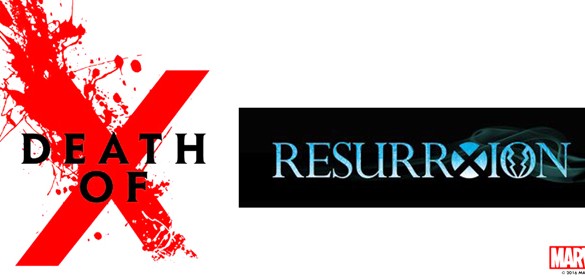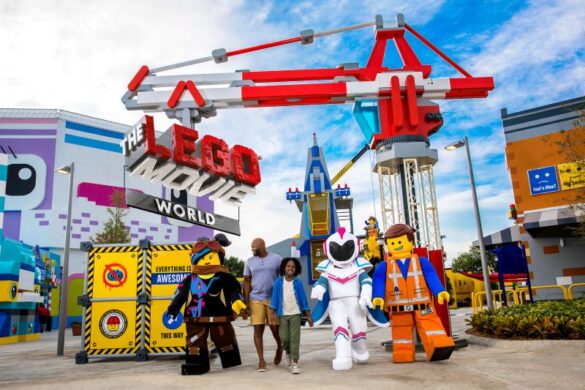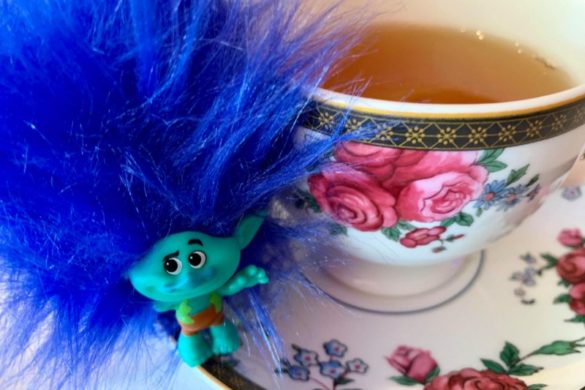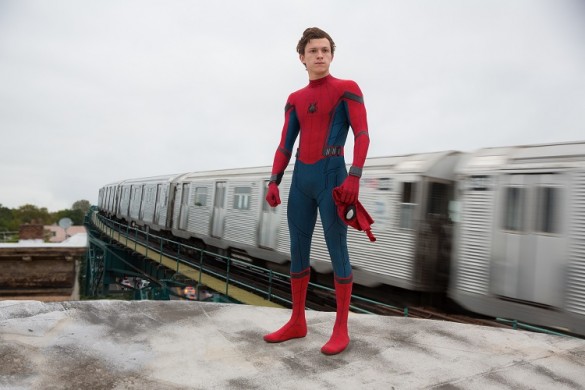Spider-Man: Into The Spider-Verse introduces a new Webhead to a younger generation. Rather than recycle the same old Peter Parker plot we’ve heard before, the film puts Miles Morales (Shameik Moore), an Afro-Latino teenager, at the heart of the dazzlingly refreshing new story about everyone’s favorite Webhead. The young and inexperienced crimefighter finds out about the responsibilities that come with being a webslinger, and with the help of five other Spider-heroes, he will become the hero that he was destined to be.
We spoke with the film’s producers, Phil Lord, and Chris Miller at a recent junket. The two, who are behind critically acclaimed animated films like Cloudy With A Chance Of Meatballs and The LEGO Movie, talked about the Spider-Man story that they wanted to tell, finding the voices for Miles Morales and Peter Parker, and some secret casting that has yet to be revealed.
Many, if not, all of us know about the Peter Parker Spider-Man story. It all started with him being bit by a radioactive spider and him on accepting the responsibility of his great power. As a result, he lost his dearly beloved Uncle Ben, and from there, he became Spider-Man, vigilante and hero of New York City.
But Miles Morales offers a new twist on the Spider-Man story of old. It’s one that shows that anyone of any color and background can be Spider-Man. “It started with us wanting to tell a Miles Morales story. That was the beating heart of the movie,” Chris Miller said.
Unlike Peter Parker, Miles Morales is an Afro-Latino teenager living with his mom, a nurse, and dad, a police officer. Although he cares for them very much, he has a strong connection to his uncle Aaron Davis, aka The Prowler. These differences may set the two apart, but it is more than enough to give a new voice and lead to the Spider-Man mythology. “And the story with him and his family, and his uncle, and his dad and his mom, and how are they going to help him become his best self, and how they will help him deal with this talent that was given to him at random,” Phil Lord said.
Because Miles has yet to reach the same popularity as Peter, it was important to have that mentor and mentee relationship, with Peter helping Miles learn the webs of being Spider-Man. “Peter was the next main relationship we were going with the movie. We were going to have Miles an unlikely mentor and see a Peter we have never seen before,” Chris Miller said.
“Kind of pass the mantle off to him a little bit,” Phil Lord added. “And so from the Greek Chorus it was sort of like, which ones from the vast universe of comics that there are, would be most different from each other: visually, stylistically, and just their point of view on the world,” Miller said.
And Miles and Peter aren’t alone. There’s also Spider-Gwen (Hailee Steinfeld) from another universe; Peter Parker of the Spider-Man Noir (Nicolas Cage) a darker take on the hero set during the Great Depression in 1933, Peni Parker and SP//DR; an anime version of the webslinger, and Peter Porker, a pig who was bit by a radioactive spider to become Spider-Ham.
“We could have the most diverse array of Spiders, Spider-beings, because, I guess, like one of them is a pig, you could say something universal about what it really means to be a hero and why the Spider-Man myth has sort of transcended time,” Miller said.
So they had to pull back on having too many Spider-beings because then the film wouldn’t be about Miles and his journey to becoming the Spider-Man of his universe. “At certain stages of the way, we went even farther but then pair back because it’s Miles’ story, and there is only so much room in the movie for all of the characters and when it gets too big there is not enough time to stay true to his coming of age arc,” Miller said.
Having different variations of Spider-Man does so much more than give us new spins on the character, it underscores the importance of diversity and the cultural impact Spidery has had with other people. “With Miles, we were trying to find – he’s half-Puerto Rican half-Black, and so like to find the right look for him that felt like he was from a blended family was important,” Miller said.
As important as it was to stay true to representation, it was also important to stay true to the character. “Some of that is established in the comics. So we just tried to honor what had been created as much as possible and treat it like ‘this is a story that really happened,’ more or less. So let’s try to represent it like how it already is,” Lord said.
But representation and authenticity was something that needed to be on point for the two. Everything from the skin color to the strands of hair had to represent the characters properly. “We worked really hard to get that stuff right and it wasn’t because we were afraid,” Lord said. “It was just because I want it to feel like a real kid. The movie is obviously expressed in a hyper operatic way. That’s what comics are. That’s what animation is. It always exaggerates things. But we always said ‘I want to do an exaggerated drawing based on observation.”
This method is also how the team approached the film’s lighting. While there are comic tropes like Ben-Day dots and lines all over the screen, but when you look at a room in the film, they wanted it to look like a room is lit by the window. “So let’s take something really real and heighten and call out what is special about it,” Lord said. “That’s how we handled every frame in the picture. So when we think about a character like Miles, let’s grab as much photo reference as we can. So what do kids look like today? How do they dress?”
Miller talked about the different styles each kid had from the different ways they put up their hair and more. “There were a lot of discussions about these movies. Unlike doing a live-action movie where sometimes you are just like – ‘we got this location for a day, we are going to shoot it,’ in this movie, every crack in the sidewalk is designed by hand. Every street sign, every last detail of everything about each character design, the environment design had to be discussed and artists had to do it by hand. So it was a lot of work, but it was all done with a lot of thought.”
When it comes to the voice talent, a lot of big names are usually used in headlining roles. But Lord and Miller admit that they didn’t even get the memo. Furthermore, some of those big names were used as supporting roles. “When we were casting the movie, we were just casting who we could think of that would embody the role and be a not stock choice,” Miller said. “With Shaimek [Moore], it was – we had auditioned him for another movie a few years back and we kind of fell in love with his sweetness and earnestness, and kind of dorky brand of swagger that he has. This guy, he wears his heart on his sleeve and he’s so cool and so fun.”
“He’s aspiring,” Lord chimed in. “He’s inspiring and he’s aspiring. He wants to grab the world by the horns and get it. But he doesn’t come across the guy who already has it. And that’s who we needed Miles to be.”
As for Jake Johnson as Peter Parker, the actor had already worked with Lord and Miller on many movies and TV shows and is a friend of theirs. So when it came to casting a “flabby fluffed-up version of Peter Parker” one who believes he’s “mature, sexy, and still got it” and “not a flimsy wafer man,” they thought of Johnson.
With so many talented voices in the film, its hard to believe that they could sneak in a few A-list stars in. But Lord and Miller did. Without going into any spoilers or giving any hints, the two stressed that they wouldn’t reveal who these secret voices are but people will be very surprised at who they managed to get to voice a couple of characters in the film.
Spider-Man: Into The Spider-Verse opens in theaters on December 14, 2018.

